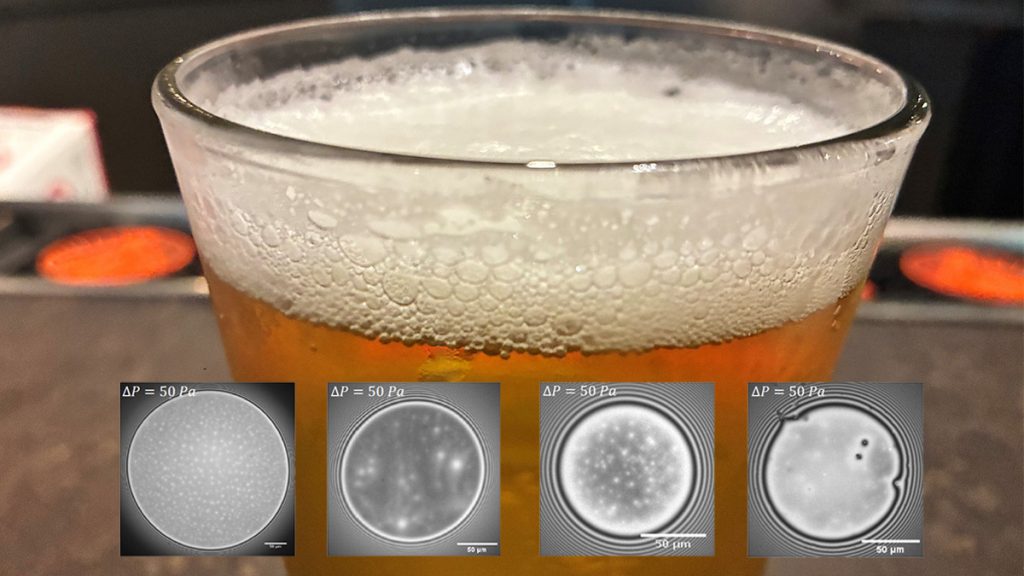Research into stability of foams finds a valuable test subject in a tall glass of beer.
From the Journal: Physics of Fluids

WASHINGTON, August 26, 2025 – Beer is one of the world’s most popular drinks, and one of the clearest signs of a good brew is a big head of foam at the top of a poured glass. Even brewers will use the quality of foam as an indicator of a beer having completed the fermentation process. However, despite its importance, what makes a large, stable foam is not entirely understood.
In Physics of Fluids, from AIP Publishing, researchers from ETH Zurich and Eindhoven University of Technology investigated the stability of beer foams, examining multiple types of beer.
Like any other foam, beer foam is made of many small bubbles of air, separated from each other by thin films of liquid. These thin films must remain stable, or the bubbles will pop, and the foam will collapse. What holds these thin films together may be conglomerates of proteins, surface viscosity, or the presence of surfactants, which are molecules that can reduce surface tension and are found in soaps and detergents.
While the researchers have spent years studying the formation of foams, they realized beer could serve as a perfect testing ground.
“The idea was to directly study what happens in the thin film that separates two neighboring bubbles,” said author Emmanouil Chatzigiannakis. “And the first thing that comes to mind when thinking of bubbles and foams is beer.”
Turning to a collection of scientific imaging and rheometry techniques, the team was able to determine how these thin films could hold together to make a stable foam.
“We can directly visualize what’s happening when two bubbles come into close proximity,” said Chatzigiannakis. “We can directly see the bubble’s protein aggregates, their interface, and their structure.”
They found that for Lager beers, foams are held together primarily through the surface viscoelasticity of the beer. However, for the Belgian Dubbel, the proteins in the beer come together to form a two-dimensional structure, giving the thin films an elastic quality that keeps them intact longer. In Belgian Tripel beers, the foam is stabilized by the Marangoni effect.
With the multiple different ways beer foams hold together, the researchers believe that beer provides an excellent platform to study the stability of foams in general, with applications in everything from oil separation to firefighting chemicals and treating varicose veins.
“This is an inspiration for other types of materials design, where we can start thinking about the most material-efficient ways [of creating stable foams],” said author Jan Vermant. “If we can’t use classical surfactants, can we mimic the 2D nnetworks that some Belgian beers have?”
The authors also hope that their work will make its way to the brewers that inspired them, and that in the future the team will identify ways to increase or decrease the amount of foam so everyone can pour a perfect glass of beer every time.
###
Article Title
The hidden subtlety of beer foam stability: A blueprint for advanced foam formulations
Authors
Emmanouil Chatzigiannakis, Alexandra Alicke, Lea Le Bars, Lucas Bidoire, and Jan Vermant
Author Affiliations
ETH Zurich and Eindhoven University of Technology
